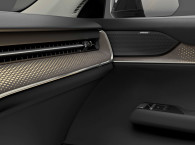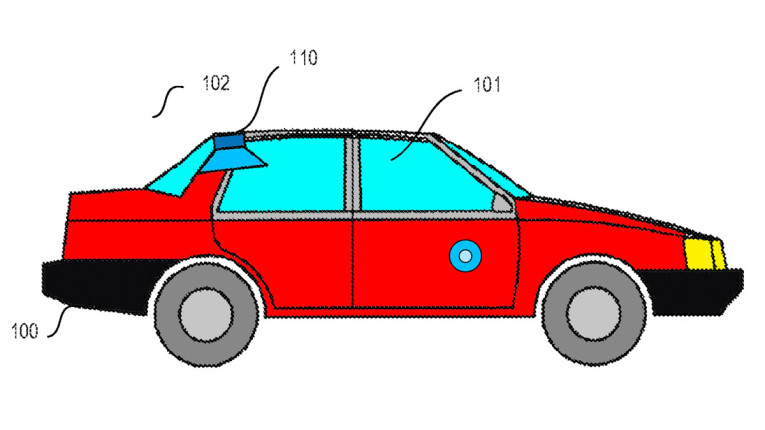
Patent/Publication Number: US10235985B2
Inventor(s): Markus Christoph (Straubing, DE), Andreas Pfeffer Andreas (Regensburg, Germany)
Assignee: Harman Becker Automotive Systems GmbH (Karlsbad, Germany)
Filed: December 23, 2016
Current CPC Class: G10K 11/162 (20130101)
Granted: March 19, 2019
Number of Claims: 16
Number of Drawings: 7
Abstract from Patent
A loudspeaker system is provided that includes a loudspeaker that is arranged in a baffle between a passenger compartment of a vehicle and the outside of the passenger compartment. The loudspeaker is configured to radiate an acoustical signal to the passenger compartment. The loudspeaker system further includes active noise control system wherein a microphone is acoustically coupled to the loudspeaker via a secondary path, and the loudspeaker is electrically coupled to the microphone via an active noise control filter.
Independent Claims
1. A loudspeaker system comprising: a loudspeaker that is arranged in a baffle between a passenger compartment of a vehicle and an outside of the passenger compartment, wherein the loudspeaker is configured to radiate an acoustical signal to the passenger compartment; a passive noise reduction system configured to eliminate high frequency noise; and an active noise control system, wherein: a microphone is acoustically coupled to the loudspeaker via a secondary path, the loudspeaker is electrically coupled to the microphone via an active noise control filter, the loudspeaker comprises a first side and a second side and wherein the first side faces the passenger compartment of the vehicle and the second side faces an outside of the vehicle, and the microphone is arranged at the first side of the loudspeaker and adjacent to the passive noise reduction system.
11. A method for noise reducing sound reproduction comprising: radiating an acoustical signal to an inside of a passenger compartment of a vehicle with a loudspeaker that is arranged in a baffle between the passenger compartment and an outside of the passenger compartment; reducing a disturbing signal with an active noise control system comprising a microphone that is acoustically coupled to the loudspeaker via a secondary path, wherein the loudspeaker is electrically coupled to the microphone via an active noise control filter; and eliminating high frequency noise via a passive noise reduction system, wherein: the loudspeaker comprises a first side and a second side and wherein the first side faces the passenger compartment of the vehicle and the second side faces an outside of the vehicle, and the microphone is arranged at the first side of the loudspeaker and adjacent to the passive noise reduction system.
13. A loudspeaker system comprising: a loudspeaker arranged in a baffle and positioned between a passenger compartment of a vehicle and an outside of the passenger compartment, wherein the loudspeaker is configured to radiate an acoustical signal to the passenger compartment; a passive noise reduction system configured to eliminate high frequency noise; and an active noise control system including a microphone that is acoustically coupled to the loudspeaker via a secondary path and being configured to reduce a disturbing signal in the passenger compartment, wherein the loudspeaker is electrically coupled to the microphone via an active noise control filter, wherein the loudspeaker comprises a first side and a second side, wherein the first side faces the passenger compartment of the vehicle and the second side faces an outside of the vehicle, and wherein the microphone is arranged at the first side of the loudspeaker and adjacent to the passive noise reduction system.
Reviewer Comments
(See the end of the next patent information for the combined review of both patents.)
Externally Ducted Vehicle Loudspeaker
Patent/Publication Number: US20190075392A1
Inventor(s): Takashi Kinoshita (Yokohama-shi, JP);
Ben John Feng (Sudbury, MA)
Assignee: Bose Corp. (Framingham, MA)
Filed: August 30, 2018
Current CPC Class: H04R 2201/021 20130101
Published: March 7, 2019
Number of Claims: 18
Number of Drawings: 9
Abstract from Patent
Various implementations include vehicle loudspeakers and related vehicle audio systems. In some particular implementations, a loudspeaker for a vehicle includes: a transducer to radiate sound into an interior space of the vehicle; and an assembly coupled to a rear side of the transducer, the assembly including an enclosure and a passive radiator, the assembly disposed such that acoustic energy radiated from the rear side of the transducer passes through the enclosure and excites the passive radiator, causing the passive radiator to radiate acoustic energy to a region outside of the interior space of the vehicle, where a resonant frequency of the transducer is dependent on at least one characteristic of the passive radiator, and a resonant frequency of the enclosure is dependent on at least one characteristic of the enclosure.
Independent Claims
1. A loudspeaker for a vehicle, the loudspeaker comprising: a transducer to radiate sound into an interior space of the vehicle; and an assembly coupled to a rear side of the transducer, the assembly comprising an enclosure and a passive radiator, the assembly disposed such that acoustic energy radiated from the rear side of the transducer passes through the enclosure and excites the passive radiator, causing the passive radiator to radiate acoustic energy to a region outside of the interior space of the vehicle, wherein a resonant frequency of the transducer is dependent on at least one characteristic of the passive radiator, and a resonant frequency of the enclosure is dependent on at least one characteristic of the enclosure.
12. The loudspeaker of claim 11, wherein the space within the body of the vehicle comprises a space within a door of the vehicle, a space within a trunk of the vehicle, a space within a dashboard of the vehicle, a space within a floor of the vehicle, a space within a headboard of the vehicle, a space within a seat of the vehicle, a space within a cargo load of the vehicle, a space within a bumper of the vehicle, a space within a fender panel of the vehicle, or a space within a structural member of the vehicle.
Reviewer Comments
In the May 2015 issue of Voice Coil, we published a patent review on the Zeljko Velican patent, US 8,804,991, “Loudspeaker and Assembly,” assigned to Blueprint Acoustics, Ltd. in Australia. The System represented an advancement in low-frequency systems for automobiles, by way of the simple concept of mounting the woofer transducer in the boundary wall of a car, creating an infinite baffle wherein the rear wave exits to the external environment. This allows the woofer to operate with its in-system fundamental resonant frequency remaining substantially the same as its free-air resonance (Fs).
A first concern was that with the low frequencies being ported outside, there would be a significant noise pollution problem. But, as discussed in the review, due to cabin gain in the bass range, the low frequencies will be equalized downward significantly to achieve flat amplitude response inside the cabin while resulting in reduced amplitude for signals conveyed to the outdoor environment. Blueprint Acoustics claims that systems with the subwoofer technology are actually quieter outside the vehicle than conventional systems with the same bass bandwidth capability.
So far, it appears that this system has been developed for installation in production vehicles, in partnership with Alpine Electronics. Alpine has also filed a number of patents exploring a wide range of packaging approaches to create practical methods for mounting a woofer in a boundary wall of an automobile with the rear wave exiting to the outdoors. The pertinent Alpine patents that have been granted to date are:
US 9,963,083, US 9,942,636, US 9,591,388, US 9,386,376, and US 9,025,790.
So far the technology, marketed under Blueprint Acoustics’ trademark “Fresh Air Subwoofer,” can be heard in a number of the new Volvo models (e.g., the XC-90 Sport Utility Vehicle).
A second concern, when implementing this type of “interior-to-exterior” installation in a vehicle, is that of external noise entering into the cabin by way of passing through the diaphragm of the woofer transducer. One of the advantages of this enclosure-less, infinite-baffle system is that a woofer with very low mass can be utilized, providing the rare combination of high efficiency and extended low-frequency response. But, in this case, the downside of implementing a low mass woofer cone is that it is quite transparent to low-frequency noise.
Two companies (Harman Becker Automotive Systems and Bose Corp.) apparently have both recognized this problem with the technology, and are the assignees of the two patents under review here, Each patent provides a different solution to the ingress of external noise — one active and one passive.
In the first patent under review, Markus Christoph and Andreas Pfeffer of Harman Becker disclose a predominantly “active” noise cancellation system based solution to the problem. The background and summary of the invention as presented is as follows.
Referring to Figure 1, a vehicle (100) is illustrated with a subwoofer loudspeaker (110). If the loudspeaker is positioned in the chassis of the vehicle between the passenger compartment (101) and the outside (102) of the vehicle, an otherwise necessary loudspeaker housing may be omitted. This approach is very compact and weight efficient while increasing low-frequency acoustical performance.

However, without housing, the speaker components have to sustain extreme environmental conditions, which make it necessary to protect the loudspeaker, for example, with a weather resistant membrane.
Another drawback that arises, due to the direct coupling of the loudspeaker to the outside of the vehicle, is instantaneous air pressure differences between the inside and the outside of the vehicle, for example, when driving into a tunnel at high speed or when opening the sunroof at an elevated speed. This may impact the membrane rest position and/or displacement of the moving voice coil and thereby the loudspeaker’s overall performance. This again may lead to a dynamically changing voice coil operating point, which affects the acoustic performance of the loudspeaker 110, (e.g., harmonic distortion). Further, noise that would usually be blocked by the otherwise sealed passenger cabin may enter the passenger compartment, which leads to greater noise levels within the cabin.
Therefore, with the application of the invention, the loudspeaker is coupled to a noise reduction system, such as a feedback based active noise control (ANC). ANC systems (see Figure 2) are usually intended to reduce an undesirable signal (e.g., noise), by providing, at the source or the listening position, a noise-cancelling signal that ideally has the same amplitude over time, but the opposite phase, compared to the noise signal. By superimposing the noise signal and the noise-reducing signal, the result, ideally is substantial elimination of the noise signal.
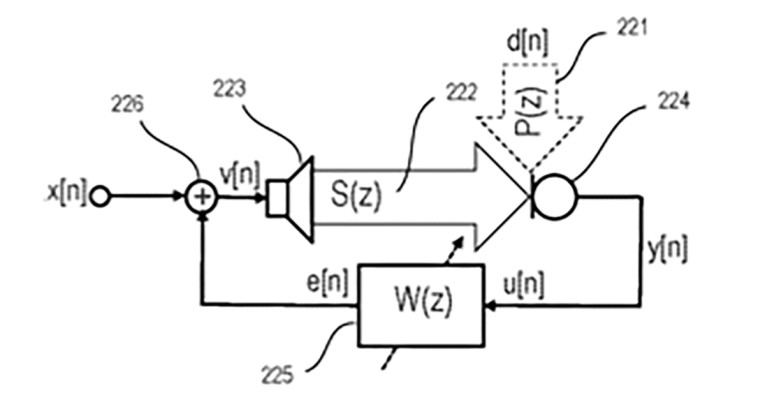

However, ANC systems are generally only able to handle lower frequency components of the noise. To reduce the upper spectral contribution of the noise, other, passive noise reduction approaches may be implemented such as insulation materials (e.g., fiberglass), arranged adjacent to the loudspeaker’s membrane. The insulation material may be arranged in front and/or behind the diaphragm or it may be integrated into the diaphragm itself. The patent suggests that other passive noise reduction approaches may be implemented as well to reduce the upper spectral contribution of the noise such as a Helmholtz resonator, for example.
It is suggested that active noise control is generally best suited for frequencies below about 700 Hz and that passive noise control, is more effective at frequencies, above 700 Hz. It is also suggested that the active feedback control implemented for the purpose of noise abatement, could also provide distortion correction for the woofer system.
In the second patent under review, Takashi Kinoshita and Ben John Feng of Bose Corp. disclose a fully “passive” noise cancellation system based solution. The background and summary of the invention as presented is: Some recently advanced systems use a transducer with a vented duct venting the rear wave outside of the vehicle to control low-frequency sound. However, these ducted transducers can introduce an additional challenge, namely the introduction of exterior noise into the vehicle cabin via the duct.
The invention discloses a loudspeaker for use in vehicles wherein the loudspeaker is ducted to a region external to the vehicle cabin. The loudspeaker system includes a transducer to radiate sound into an interior space of the vehicle; and an assembly coupled to a rear side of the transducer, including an enclosed chamber with a passive radiator (see Figure 4).

The assembly is arranged such that acoustic energy radiated from the rear side of the transducer passes through the enclosure and excites the passive radiator, causing the passive radiator to radiate acoustic energy to a region outside of the vehicle, where a resonant frequency of the transducer is dependent on at least one characteristic of the passive radiator, and a resonant frequency of the enclosure is dependent on at least one characteristic of the enclosure.
The resonant frequency of the transducer is dependent on the volume of the chamber, the cross-sectional area of the passive radiator, the mass of the passive radiator, a loss factor of the passive radiator and the stiffness of the passive radiator suspension. In some embodiments, the enclosure further includes a duct that couples the passive radiator to the chamber. The resonant frequency of the transducer is further dependent on acoustic properties of the duct (e.g., the cross-sectional area and length of the duct). In some implementations, the cross-sectional area of the duct remains approximately constant along the length of the duct and in others the cross-sectional area of the duct varies along the length of the duct from the transducer to the passive radiator.
The patent is written in a manner that provides generalization of the configuration layout and mathematical expression without much discussion of empirical results (e.g., of model elements, see Figure 5).
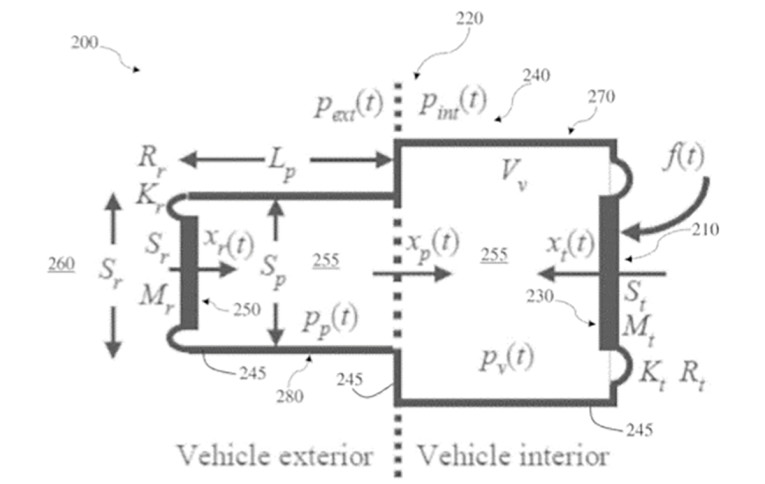
At the end of the day, there are two primary resonances explored and controlled — that of the “A” the transducer mechanical resonance and “B” the Helmholtz resonance from the duct and passive radiator. “A” also represents the lower limit of the usable frequency range. Varying the parameters of the system the sensitivity of “A” or “B” can be controlled independently to a certain degree (see Figure 6). Ultimately, some optimized embodiments can control the gain balance between the two and the passive radiator can provide a filter for the incoming noise to a much greater degree than the pure duct to the exterior that is used in the Fresh Air Subwoofers currently implemented by Blueprint Acoustics/Alpine.
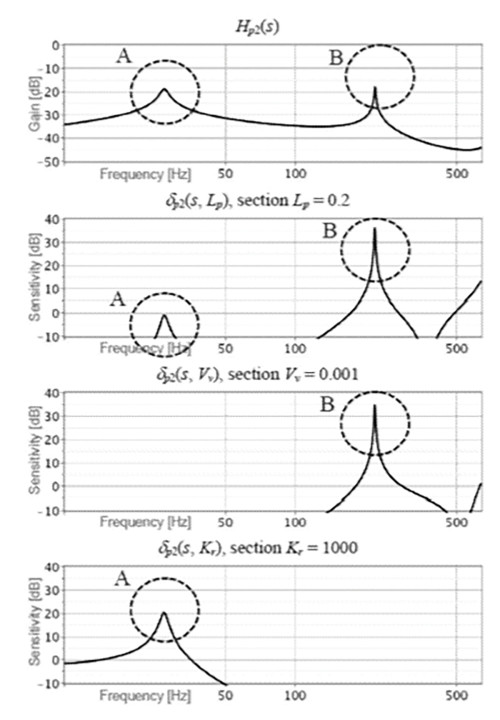
The example models and example analysis appear to confirm the benefits over the current approaches, but there are no actual example measurements that illustrate real-world gains.
The Alpine patent US 9,942,636 employs a passive radiator and intermediate subchamber in the same general position as the Bose passive radiator and subchamber but does not define the parameters in the same manner to block sound from the external environment. Instead, it is optimized for environmental protection of the transducer.
For more information on the Bose patent concept, the inventors have written an Audio Engineering Society (AES) paper, “Flexible control of the transducer and the duct resonance of a speaker system ducted to the exterior of a vehicle cabin” presented at the 143rd convention, October 2017.
Both Harman and Bose appear to be exploring the Fresh Air Subwoofer concept and have pursued methods to reduce ingress of noise from the external environment. Harman uses straightforward active ANC combined with passive absorption means to achieve their goals while Bose applies a theoretical mathematical model of a passive resonator to address the same problem. It will be interesting to see if the Bose models prove to be useful in practice, in that they represent a simpler, lower cost solution, if successful.
It is interesting that the general Fresh Air type woofer concept was disclosed along with a patented solution to the external noise problem in a 1937 patent, US 2,229,443, “Acoustic Apparatus for Motor Driven Vehicles” by Frederic Shoup and Cyrus Caulton of RCA. Their solution was to basically place a Helmholtz resonator/filter between the woofer driver and the external environment, which if well implemented, should be an effective approach.
From a low-frequency performance and efficient subwoofer cost standpoint, the Fresh Air concept elevates the state of the art. It will be interesting to see how well some of the practical problems are dealt with and how the technology evolves. P.S. For those who enjoy reading German (or creative technical translations by Google), Audi AG has also jumped into the fray with a new patent filed on its implementation of the Fresh Air Subwoofer concept, in DE 102016004152, titled “Compact speaker arrangement for a vehicle.” VC
This article was originally published in Voice Coil, August 2019




